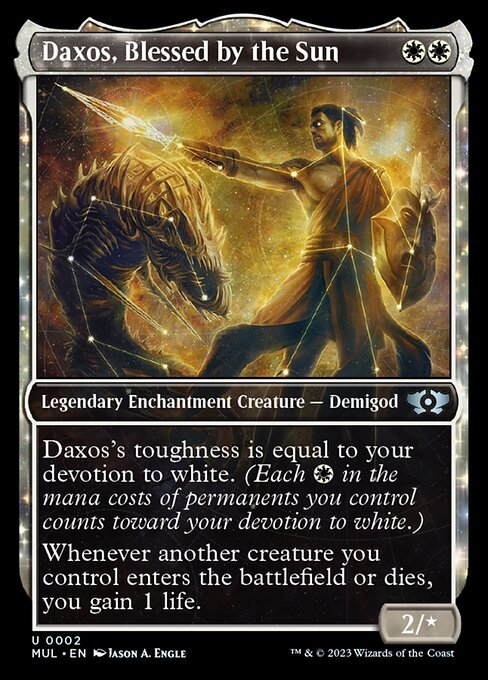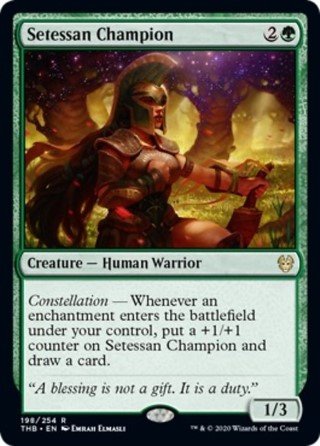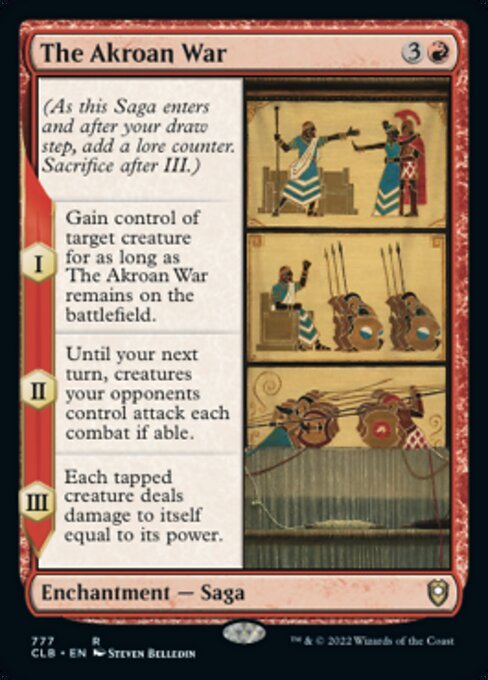Theros Beyond Death Trailer and mechanics
Fun fact: Wizards tagged Ramin Djawadi, the soundtrack composer for Game of Thrones and Westworld in their sneak peek at the Game Awards. They have been going above and beyond with their trailers lately and Beyond Death is no exception. Have a look at the trailer and lets get into the new mechanics.
ESCAPE
If a card with escape is in your graveyard, you can cast it. Escape provides you with an alternative cost with two components: an amount of mana you'll have to pay and a number of other cards you'll have to exile from your graveyard. Escape doesn't change when you can cast the spell. Instants with escape are good to go anytime; the other card types can be cast only during your main phase when the stack is empty.
Casting a spell using escape doesn't change any of the normal rules for casting a spell. The spell goes on the stack. It can be countered or otherwise responded to. Its converted mana cost doesn't change—it's always based on the mana cost, not the escape cost.
When an instant or sorcery spell with escape resolves (or is countered or otherwise leaves the stack), it returns to its owner's graveyard. Permanent spells with escape that resolve head to the battlefield, but if they die later, they'll head back to the graveyard. Don't tell Erebos, but cards can escape over and over again throughout the game as long as you have enough other cards to exile and mana to spare.
A few creature cards (like that good boy Underworld Rage-Hound) have abilities that say they escape with a number of +1/+1 counters. This just means that if you cast them from your graveyard using the escape ability, they'll enter the battlefield with that many +1/+1 counters.
DEVOTION
Your devotion to a color is equal to the number of mana symbols of that color among permanents you control. Abilities that refer to your devotion to a color use that number in a variety of ways. For example, Daxos, Blessed by the Sun uses it to define his toughness.
To calculate your devotion to a color, look at the mana costs of all the permanents you control. Every mana symbol in those mana costs that's the appropriate color adds one. For example, Daxos has two white mana symbols in his mana cost, so controlling Daxos increases your devotion to white by two. If an effect refers to your devotion to two colors, count every mana symbol that's either of the colors. If there's a hybrid mana symbol that's both colors, count it only once. Generic mana symbols ({0}, {1}, {2}, and so on, including {X}) and colorless mana symbols ({C}) don't count toward your devotion to any color.
Daxos's toughness is constantly updated as your devotion to white changes. But if a resolving spell or ability refers to your devotion to a color, you calculate that devotion one time—as the spell or ability is resolving. For example, check out Klothys's Design.
CONSTELLATION
As an ability word, constellation doesn't have a specific rules meaning. It's used to shine some starlight on abilities that trigger whenever an enchantment enters the battlefield under your control. Each constellation bonus is different.
It doesn't matter if the enchantment also has other card types. For example, if an enchantment creature enters the battlefield under your control, constellation abilities will trigger. However, an Aura spell that doesn't resolve—perhaps because its target becomes illegal in response—won't enter the battlefield, and it won't cause constellation abilities to trigger.
SAGAS
Sagas are enchantments that tell epic stories, one chapter at a time. They first appeared in Dominaria and make an epically fitting return in this set.
If you're not familiar with Sagas, here's how they work. Each Saga has a number of chapters (usually three, but don't be, you know . . . shocked if a set inspired by ancient Greece had some unusually long stories), each with an associated ability. The abilities typically play out one per turn until the story is complete and you sacrifice it. It's just like the library, but with fewer late fees and more sacrificing and bloodshed.
You keep track of what chapter you're on using lore counters. Sagas enter the battlefield with a lore counter on them. As your precombat main phase begins (meaning just after you draw for the turn), you add a lore counter to each Saga you control. Adding lore counters in either of these ways doesn't use the stack.
Any time a Saga you control gets a lore counter, the corresponding chapter ability triggers. This means the chapter I ability triggers when the Saga enters the battlefield, as that's when it got its first lore counter. In most cases, the chapter II ability will trigger on your next turn, then chapter III on your subsequent turn, and so on.
Chapter abilities use the stack and can be responded to. If a chapter ability requires a target and no legal target is available, the chapter ability won't do anything. Once the last chapter ability has triggered and left the stack (by resolving, being countered, or any other way), the Saga's controller sacrifices it.
About andreliverod:
Founder and CEO of AetherHub.com, he likes to play with fire and also has a Twitter account he posts his stuff on. If you are interested in supporting him on Patreon you will also receive an AetherHub.com premium subscription!
"Nuts & Bolts Spike spends his energy looking within. He tries to understand his own internal flaws and works to improve them"







